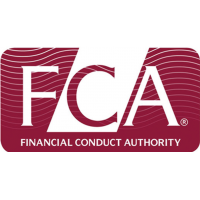
The FCA promises a greater focus on Treating Customers Fairly outcomes and adherences to the FCA’s Principles of Business – but that’s not all.
The longer-term goal of the regulator, driven by the rules set down in the EU Mortgage Credit Directive will see the second charges merge with the first-charge mortgage market.
In this week’s Marketwatch we asked our experts what they think will be the biggest challenges facing the second charge sector as a result of the shift in regulation.
Marie Grudy, operations director at secured loan broker VLoans and board member of the Association of Mortgage Intermediaries thinks this will involve rigourous authorisation and supervison but adds support is at hand
Simon Carr, director of secured loans at Precise Mortgages, thinks regulation under the FCA will bring second charges out of the shadows and into the spotlight
Buster Tolfree, commercial director at secured loan and mortgage lender Central Trust, said the industry should move to an MMR-style affordability model sooner rather than later
 Marie Grudy, operations director at VLoans and board member of the Association of Mortgage Intermediaries
Marie Grudy, operations director at VLoans and board member of the Association of Mortgage Intermediaries
The challenges for anyone involved in second charge lending or broking began as soon as the responsibility for regulation of consumer credit transferred from the Office of Fair Trading to the Financial Conduct Authority.
This is much more than holding interim permissions this is about life under a stronger, fiercer regulator.
We can expect rigorous authorisation and supervision of the industry as well as holding wide ranging enforcement powers with the emphasis on personal liability and unlimited fines.
Whilst full FCA authorisation will come into being in 2016, any firm which fails to incorporate the spirit of life under the FCA into their business model and processes will in my view be playing a dangerous game.
Right now interim authorisation means strict rules around who can transact second charge business.
It will be looking at the implementation of TCF policies, complaint procedures, adherence to the consumer credit sourcebook (all 654 pages of it), Principles for Business and incorporation of the general provisions handbook.
The next 12 months will be about the implementation of new business structures and processes, an emphasis on evidence and documentation and an introduction to a world of advised sales.
Helpful and informative workshops, run jointly by lenders and broker trade associations, were oversubscribed demonstrating how seriously our industry is taking the changes that are about to take effect.
However the real challenge for the second charge industry will be late 2015 and early 2016 when the application for full authorisation begins and the European Mortgage Directive is implemented.
We will eagerly await the consultation on both of these far reaching changes which is anticipated in the Autumn of 2014.
 Simon Carr, director of secured loans at Precise Mortgages
Simon Carr, director of secured loans at Precise Mortgages
Firms carrying out regulated consumer credit activities must follow certain rules about how they manage their businesses and treat their customers.
These include rules made by the FCA, which are in their handbook, and the requirements of the Consumer Credit Act (CCA) and secondary legislation.
A number of CCA requirements have been moved into the handbook along with key elements of guidance issued by the Office of Fair Trading. There are also some new rules.
Since Precise Mortgages launched in 2010 we have believed that compliance with the regulatory regimes in place and, where possible, early adoption of future rules proposed by the regulator was crucial.
This spells out to mortgage brokers that second charge loans are an important consideration to any customer’s financial requirement.
The mystical black art of second-charge loans has today been brought to the main stream as a result of the move to FCA regulation – it’s now no longer Kung-Fu more like Typhoo!
A mortgage intermediary who has chosen the early adoption of second charges as a viable customer solution will convert more business and realise greater opportunities.
The challenge for me lies firmly at the intermediaries feet.
How can you compliantly evidence the product you have offered to your customer is the correct one if you have not given a ‘second charge’ thought?
 Buster Tolfree, commercial director at secured loan and mortgage lender Central Trust
Buster Tolfree, commercial director at secured loan and mortgage lender Central Trust
Central Trust has experience of FCA regulated mortgages already and therefore we see this transfer of regulation as a positive move.
In the short-term, lenders and brokers will be held accountable to FCA rules as opposed to OFT guidance and the ramifications of breaching these, or the 11 Principles of Business are great to both individuals and the company.
Every single lender and broker in the market should have undertaken a full review of its lending and customer management policies and practice before 1 April 2014 and the benefit to the end customer of this is ultimately a financial product and process they can trust.
In the medium-term, MMR-style affordability models will ensure all lenders follow a responsible approach to affordability over the term rather than simply relying on out-of-date, debt-to-income ratios at inception.
Figures from the Finance and Leasing Association clearly show that the secured loan market is growing.
But it is also changing broadly evolving into a primer market where customers can benefit from raising funds separate to their mortgage for home improvements, debt consolidation or other purposes.
In the longer-term the European Mortgage Directive is likely to unite the first and second charge mortgage market in 2016 bringing a level of understanding and visibility to the general public that currently doesn’t exist.
The level of regulatory and market change over the next two years is vast and unparalleled but for those willing to embrace the brave new world significant opportunities do exist.














